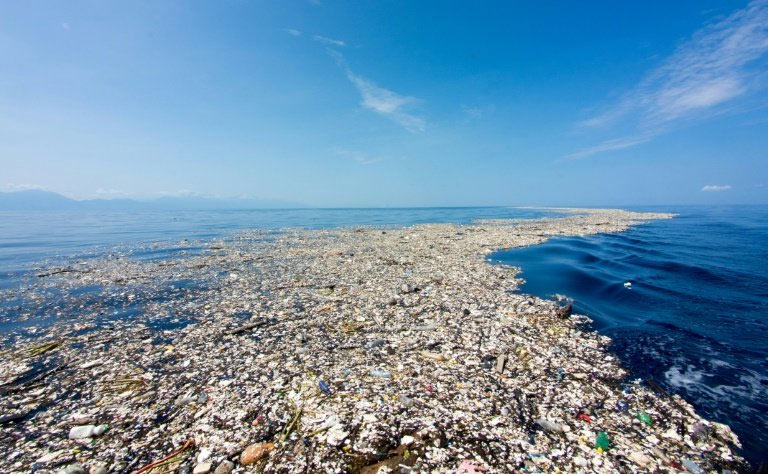As vast and deep as the Pacific Ocean, there is still something hidden in its waters. One of them is the famous island made of trash, which is mostly caused by human activity. But what is it made of? Where did it originate from?
Facts About The Great Pacific Garbage Patch
The Great Pacific Garbage Patch is also known as the Plastic Island or Trash Island. Whatever you may want to call it, this huge build-up of plastic rubbish located somewhere between California and Hawaii is getting more massive day after day. Unknown to a lot of people, this isn’t just an island made up of trash.
You can only find higher concentrations of trash and litter items in this area, and much of this debris are pieces of floating plastic that are not visible to the naked eye. Ocean rubbish is continuously mixed up by the wave and wind action. To know more about the trash island, you should keep reading and know these Great Pacific Garbage Patch facts.
Charles Moor Discovered the Great Pacific Garbage Patch
Charles Moor was able to come across this massive trash pile when he was competing in the biennial Transpacific Race in 1997 from Hawaii to California. When he was passing the Subtropical Gyre in the Northern Pacific, he and his crew discovered millions of pieces of garbage floating around their ship. This was eventually named the Great Pacific Garbage Patch.
Located in the Northern Part of the Pacific Ocean
The Great Pacific Garbage Patch is a huge collection of marine trash that envelops the ocean from Japan to the West of North America. The Garbage Patch in the West, close to Japan and the Garbage patch in the East located between California and Hawaii, forms the Great Pacific Garbage Patch.
Currents in the North Pacific Subtropical Gyre
The four currents that make up this gyre are the California current, North Equatorial current, California current, and the North Pacific current. This circular current system is formed by the Earth’s rotation and wind patterns.
These four currents rotate in a clockwise direction, which draws in trash from the Pacific Ocean, forming the Great Pacific Garbage Patch. The Subtropical Gyre in the North Pacific consists of a size of 20 million square kilometers.
North America and Asia
All the trash in the Great Pacific Garbage Patch came from North America and Asia. 54% of the trash found in the GPGP comes from the activities from these regions. 20% are from the offshore oil rigs, large cargo ships that dump trash in the water, and boaters. Most of the trash found here are computer monitors and LEGOs.
Moore’s Return
When Charles Moore returned after one year, he was surprised that the GPGP had grown immensely, and we are not just talking about the area but also density. Charles Moore then began writing stories, articles and making speeches. He changed his foundation’s mission in Algalita, which was originally to improve the California coast water quality.
Algalita refocused on learning and increasing the awareness of the people regarding the problem. It addressed the plastic trash issue in the oceans, and more particularly, in the Great Pacific Garbage Patch. A 2006 article in the Los Angeles Times about the GPGP received a Pulitzer Prize and successfully raised awareness of the problem.
No Action Taken
No nation close to the GPGP would take any responsibility. Unfortunately, and fortunately, the garbage patch is too far away from any country’s jurisdiction. The discoverer Charles Moore even stated that any nation that would attempt to clean up the Great Pacific Garbage Patch would go broke or bankrupt.
Too Wide to Scour
Scientists say that the Great Pacific Garbage Patch would be difficult to scour as it is too wide. Making it more difficult is that all the trash isn’t floating on the water. Some of it sinks below the surface, thus making it more difficult to measure it exactly.
Majority of the trash is Plastic
There are two main reasons why there are various kinds of trash that enter our oceans and become a major reason for ocean pollution. First is the durability, malleability, and low cost of plastic, which makes it the perfect material for making products. The other is that goods made from plastic are non-biodegradable, which means they do not decompose.
Humans will Suffer in the Future
Humans will also be affected by the Great Garbage Patch, just like the marine animals. As humans are also a part of the food chain, they are not exempted from this tragedy’s after-effects. The shortage of seafood will make the product much more expensive and, in the long run, inaccessible. The food chain is just one side of the problem that the GPGP causes.
Takeaway
So, there you have it! We hope that these facts opened your eyes and made you realize that we should always reuse, reduce, and recycle as much as possible. We might not know it, but we are liable for forming the Great Pacific Garbage Patch.
HussaiN is a full-time professional blogger from India. He is passionate about content writing, tech enthusiasts, and computer technologies. Apart from content writing on the internet, he likes reading various tech magazines and several other blogs on the internet. Email ID: arrowtricks.pvt@gmail.com


0 Comments